Behind the Art
September 30 2019
Recently, we received a question on the Discussion forum about the process behind how we’re making Foregone. We thought it would be an excellent opportunity to take a deeper dive as part of a Dev Update with Big Blue Bubble’s Art Director, Dan Rickard.
High Level Look
At a very high level, the general art process can be broken down into five stages – concept, model, texture, animation, and in-game. How we get there though is slightly different depending on whether we’re working with characters or environment art.
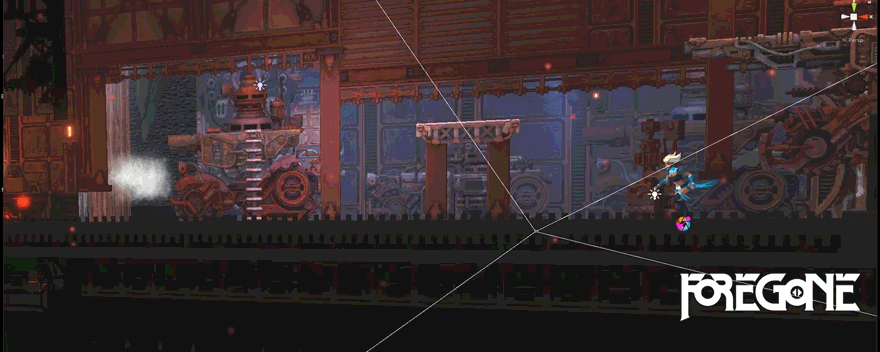
For characters, we start with thumbnail sketches to gather inspiration and look for a strong silhouette. These are very quick and basic drawings to find general appeal and interest with an emphasis on overall body shape as it needs to be legible from both size on screen and being pixelated. After the drawing is approved, characters and environments are modelled and textured. These are then eventually brought into Unity where a post-process pixelation effect is then added over the art to help bring it to the desired look.
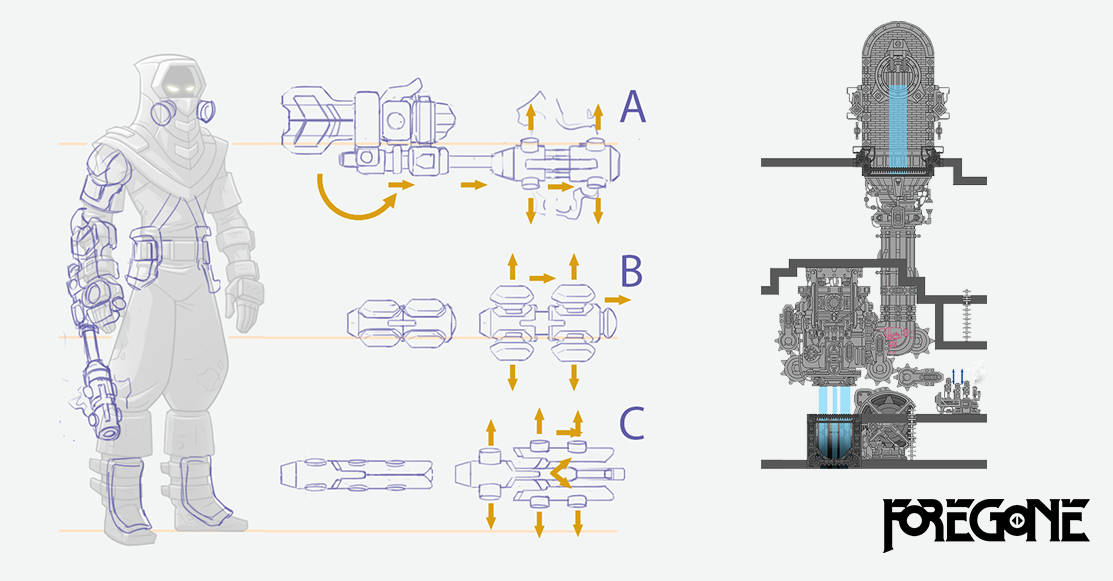
Conception
When you’re conceiving and dreaming up these characters and worlds, it can be an iterative process, and that’s one reason why we’ve chosen to work in 3D. Some assets are a single drawing to decide and others are dozens. One would think that the complexity of an object would dictate the number of variations. However, sometimes it is the most simple of objects that require more back and forth as moving a few pixels a little this way or that can have significant outcomes. An example of this is the hair of the main character. Probably dozens of hairstyles were tried until we finally found one that the majority approved.
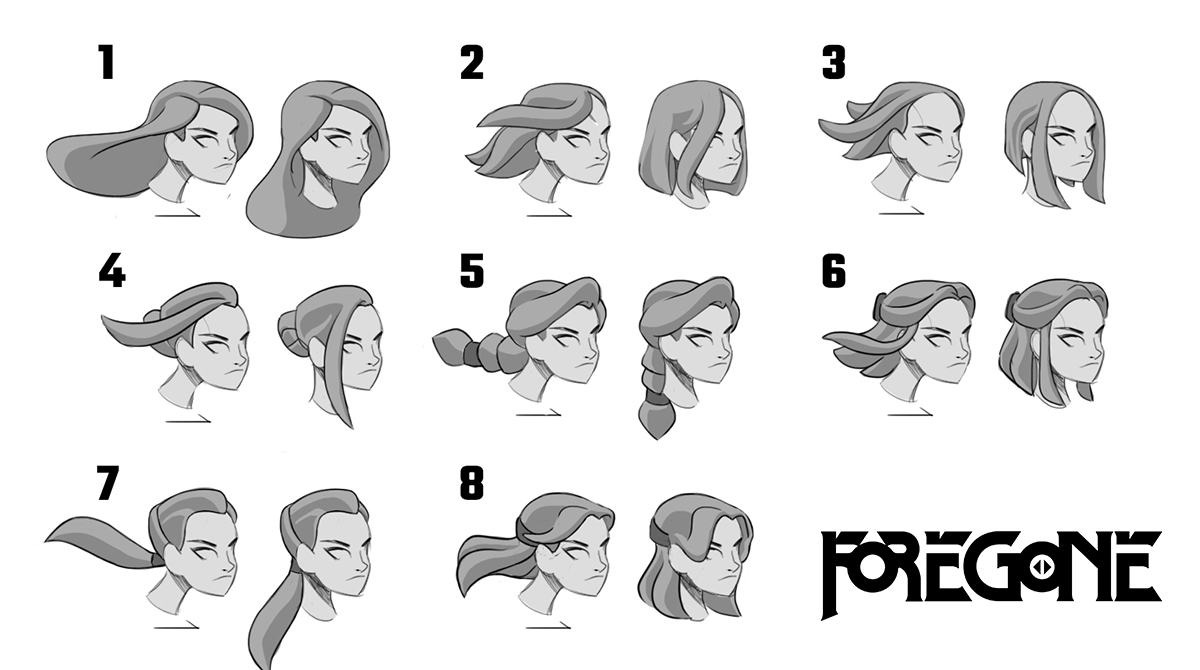
After the drawing is approved, 3d modelling begins. Characters are modelled in low poly technique with emphasis on retaining the previously mentioned silhouette as well as anticipating any rigging issues for future animation needs. The mesh is then unwrapped, and a simple texture is applied. The texture focuses on tonal contrast between details as well as the thickness of detail to help push the legibility later on.
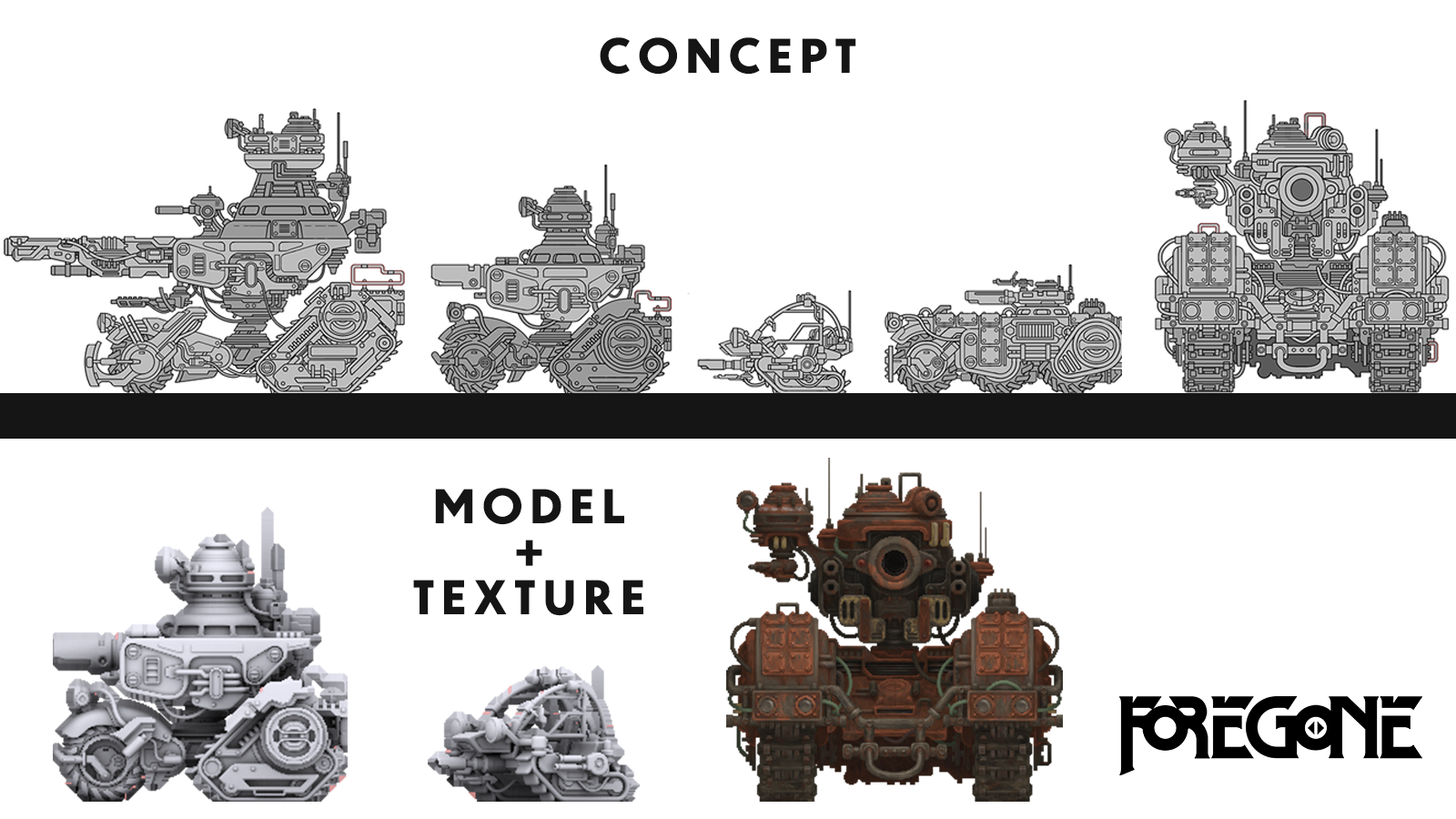
Bringing Foregone to life
When designing the environment and objects that make up the world of Foregone, we want to maintain as much detail as possible, while not causing a loss in performance. By modelling and through the use of normal maps and dynamic lights, we can still get the same look of 3d depth on the 2d sprites, allowing us to create a rich and vibrant world.
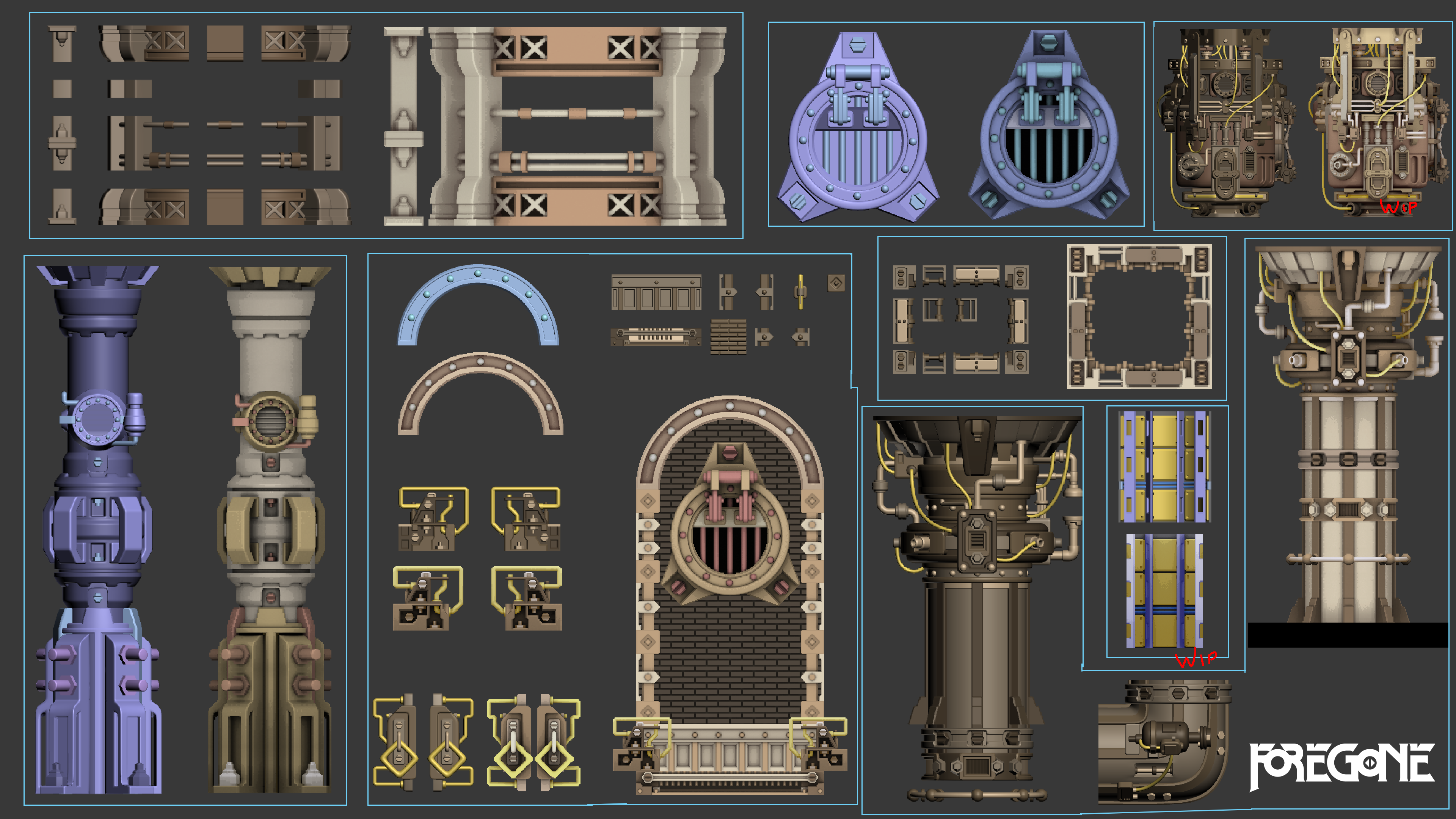
For characters, once they’re modelled in 3D, they’re animated and then exported for use in Unity. The reason we keep our characters in 3D is two-fold. One, it creates a faster and more efficient pipeline for tweaking and approving animations. And two, it allows us to make in-engine mesh swaps without the need to rebake an entire sprite sheet every time a change is made. This technique enables us to save an exponential amount of time and put greater focus into making the characters look and feel right in the world.
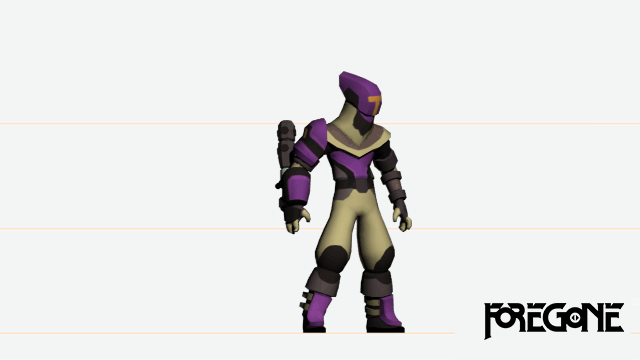
With the decreased time for animation to in-game, we’re able to get our hands on things quicker and get a true feeling of what it feels like in-game. From there, our programmers implement customized post-processing filters to get a more traditional pixelated type of look. It looks exactly the same as if we had baked out the characters into sprite sheets, but we get all the benefits of using 3d characters.
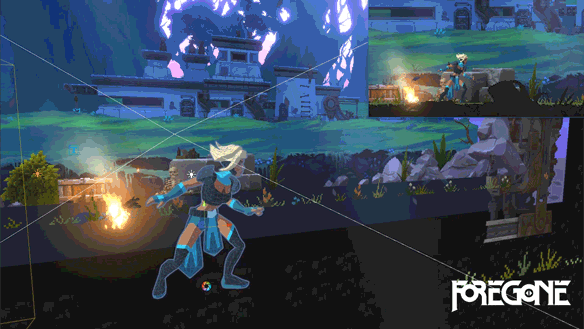
Hopefully, you’ve enjoyed this behind the scenes look at the creative side of Foregone. As always be sure to follow Foregone and check back for more updates on development as we get closer to release.